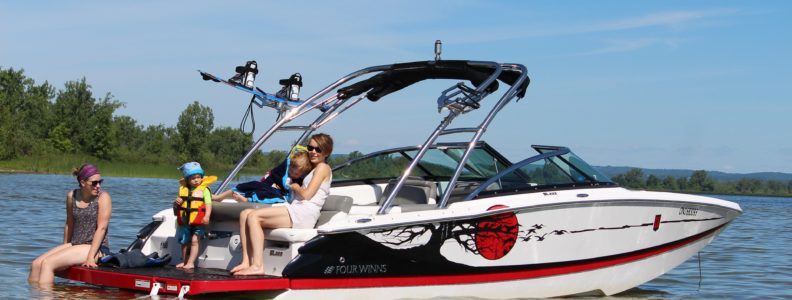Guest Blog Contributed by Chamber Member Kyle Bunch American Family Insurance
Float On With These Boat Safety Tips
Does a wave of anticipation wash over you before each day on the water? With common sense boat safety training, there can be less worry and more excitement.
Are You the Captain?
The captain of the boat is the leader on the water. Knowing how to avoid incidents and having a plan if something does happen will give all your passengers peace of mind.
Completing a boater’s safety course before embarking will help you understand state laws and brush up on first aid. State links can be found at boat-ed.com.
Keep your distance. Staying 100-150 feet from shores, docks, buoys, other boats, swimmers and mooring or swimming fields is required.
Having an emergency kit with flashlights, blankets, jackets, towels, maps, flares, fire extinguishers, first aid supplies, sunscreen and bottled water is smart. Not drinking while driving, since outdoor variables change a body’s reaction to alcohol, will also help.
Check weather reports before leaving, watch radar apps on smartphones, monitor warnings on radios and be willing to change plans when shifting winds, changing skies and falling barometers signal weather swings.
Carrying lifejackets for all passengers and having them actually wear them, especially if skiing, tubing or swimming, as well as having a spotter when pulling skiers or tubers, keeps the good times going.
Advanced Safe Boating
Carbon monoxide detectors alert you to what you can’t see, smell or taste. Carbon monoxide can affect you in seconds, so turning on your bilge blower every time you start your motor is recommended. Making sure that carbon monoxide isn’t building up in your cabin, that all enclosed areas are ventilated, that swimmers avoid exhaust fumes and that you’re not downwind and breathing CO from other boats can be lifesaving.
Using a topographic map can keep you from grounding yourself or causing damage to your hull.
Navigational boat lights are vital for legal operation whenever visibility is hindered, and helps you know the position, direction and state of boats you may be approaching. Displaying red/portside, green/starboard lights and white stern and mast lights tells other boats you’re present. White lights are required when visibility is low, even when drifting or at anchor.
The rules are designed to keep everyone safe, not to hamper enjoyment. Asking an American Family Insurance agent about boat protection helps you find the right boat insurance coverage to keep your boating dreams afloat.

